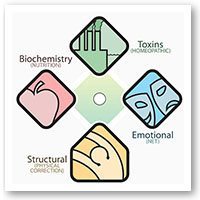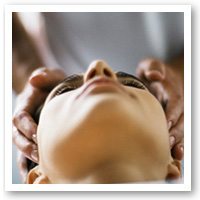Fractures, Sprains and Chiropractic
 Can Chiropractic help with a fracture (the medical term for any broken bone)? No, of course not! But Chiropractic can help if you’ve had a fracture, it has healed, but it still just doesn’t feel right.
Can Chiropractic help with a fracture (the medical term for any broken bone)? No, of course not! But Chiropractic can help if you’ve had a fracture, it has healed, but it still just doesn’t feel right.
Obviously the first thing you need to do if you suspect a fracture is go to the hospital and have it treated. Once it has healed and you are able to use it again, you may notice that it is can be painful or uncomfortable at times, or it just doesn’t feel right. If it doesn’t improve then thats when seeing a Chiropractor can be helpful.
When you have a fractured bone it is usually due to a fall. So when you fall and land with enough force to break your bone, it is obviously quite a large force. It is not only the bone that will be injured by this degree of force, there would be a number of surrounding joints and ligaments, tendons and muscles affected by the impact.
These muscles and tendons will very likely be strained, while the joints can be jarred, inflamed and possibly in slight misalignment. This will result in the joints in the area not moving freely, so when moving that part of your body, it will feel tight and restricted, and even painful. The muscles would also feel sore and possibly spasmed.
Similarly, spraining a joint can impact on surrounding joints, muscles and ligaments. Seeing a Chiropractor soon after having such an injury is important as it can improve the rate of healing, as well as reduce the level of pain. A sprain is essentially due to overstretching of a joint and hence the ligament crossing that joint will be strained, sprained or in extreme cases, torn. This overstretching of the joint will impact the alignment of that joint, and then this misalignment will continue to put some strain on the ligament. This ongoing strain can reduce the ability of the ligament to heal.
The misalignment of the joint can also produce pain, so treating the misalignment will reduce the pain, and improve the overall function. This is particularly the case when its an ankle that has been sprained (which is very common) as there are so many bones around the ankle there is potential for many joints to become affected. Then as a secondary problem, if there is some changes in the alignment of the foot joints, then the body will be compensating because of pain and also poor biomechanics, which can result in pain and inflammation in the knees or back.
Chiropractic care can be very effective in correcting these joint misalignments and so it makes sense to have some Chiropractic care at some stage after an injury such as a fracture or sprain to improve healing, decrease pain and improve overall function.

 Your body goes through many changes during pregnancy, and it is amazing at how well it adapts and accommodates for the increasing size of the baby, and then in preparation for the birthing process. Chiropractic can be helpful in several ways as your body goes through these changes.
Your body goes through many changes during pregnancy, and it is amazing at how well it adapts and accommodates for the increasing size of the baby, and then in preparation for the birthing process. Chiropractic can be helpful in several ways as your body goes through these changes. Neuro Emotional Technique or NET is a simple mind-body stress reduction intervention aimed at improving behavioral and physical problems, such as in chronic injuries, subluxations, pain, worry, anxiety, depression, etc. It was developed by an american Chiropractor, who like all Chiropractors would regularly see patients where chiropractic adjustments aren’t enough to help them with chronic pain, while also understanding that stress changes our physiology and affects our structure, and hence can lead to musculoskeletal problems.
Neuro Emotional Technique or NET is a simple mind-body stress reduction intervention aimed at improving behavioral and physical problems, such as in chronic injuries, subluxations, pain, worry, anxiety, depression, etc. It was developed by an american Chiropractor, who like all Chiropractors would regularly see patients where chiropractic adjustments aren’t enough to help them with chronic pain, while also understanding that stress changes our physiology and affects our structure, and hence can lead to musculoskeletal problems. Like all modern healthcare, Chiropractic techniques are constantly changing with the times. Just as your GP no longer applies leeches to you, Chiropractors have updates their techniques for improved results and experiences. Here are some common myths debunked…
Like all modern healthcare, Chiropractic techniques are constantly changing with the times. Just as your GP no longer applies leeches to you, Chiropractors have updates their techniques for improved results and experiences. Here are some common myths debunked… It’s that time of year again. The days are getting longer (slowly), we are beginning to look forward to summer and we are becoming more motivated to get out and exercise. For some of us that means signing up for one of the many fun runs, half marathons or maybe even marathons that are held in Sydney over the next 6 months. Running is great for your fitness and for weight loss, but it can be hard on your body, especially if you haven’t done much of it in the past few months.
It’s that time of year again. The days are getting longer (slowly), we are beginning to look forward to summer and we are becoming more motivated to get out and exercise. For some of us that means signing up for one of the many fun runs, half marathons or maybe even marathons that are held in Sydney over the next 6 months. Running is great for your fitness and for weight loss, but it can be hard on your body, especially if you haven’t done much of it in the past few months. Delivery assistance, natural birthing, drug-free birthing, low back pain, sciatic pain or pain down the leg, baby in breach position, balance and coordination, hormonal balance.
Delivery assistance, natural birthing, drug-free birthing, low back pain, sciatic pain or pain down the leg, baby in breach position, balance and coordination, hormonal balance. When you’re faced with pain, especially if it’s the first time, it’s hard to know who to turn to. Can your GP help, or do you need someone more specialised, someone who treats your specific issue? Both physiotherapy and chiropractic professions specialise in the musculoskeletal system, to help improve overall health and well-being.
When you’re faced with pain, especially if it’s the first time, it’s hard to know who to turn to. Can your GP help, or do you need someone more specialised, someone who treats your specific issue? Both physiotherapy and chiropractic professions specialise in the musculoskeletal system, to help improve overall health and well-being. Choosing a chiropractor is an important decision. A chiropractor helps to improve your health by looking at your spine and nervous system and their relationship to the rest of the body. Before putting yourself in the hands of a chiropractor there are some things you should consider:
Choosing a chiropractor is an important decision. A chiropractor helps to improve your health by looking at your spine and nervous system and their relationship to the rest of the body. Before putting yourself in the hands of a chiropractor there are some things you should consider: Chiropractic is an ideal alternative therapy that works not only to relieve headache pain but to also restore normal functioning to the nervous system and spine. Please read on for more information.
Chiropractic is an ideal alternative therapy that works not only to relieve headache pain but to also restore normal functioning to the nervous system and spine. Please read on for more information.